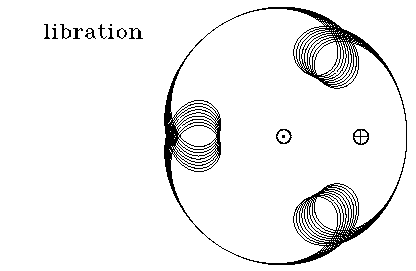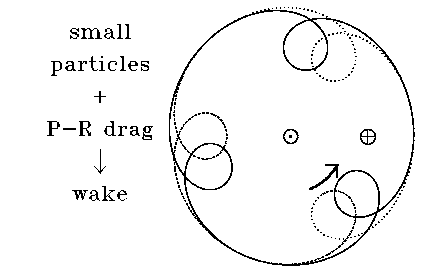The Formation of Rings and Wakes
As it spirals into the sun under the effect of Poynting-Robertson drag, zodiacal dust gets trapped in resonant orbits with planets. The orbits that trap the most dust are ones where the planet goes around the sun once every j years, and the particle goes around once every j+1 years, where j is an integer. In the reference frame of a planet in a circular orbit going around the sun, a moderately eccentric 3:4 resonant orbit looks like this:


The resonant orbit librates about an equilibrium configuration.


The planet traps particles in orbits with several different values of j. The trapped particles form a ring of enhanced dust density around the sun. Notice the gap at the location of the planet.


The smallest particles experience the most Poynting-Robinson acceleration. In order to stay trapped, they prefer to have their encounters with the planet closer to the planet on the trailing side, where the component of the planet's gravitational force that opposes the P-R drag is stronger. This balance creates an asymmetry in the ring: a trailing wake of dust.

